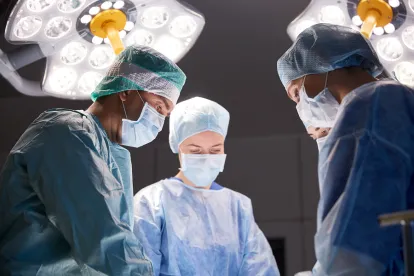Addressing pre-America Invents Act (AIA) 35 USC § 102(b), the US Court of Appeals for the Federal Circuit held that the public-use and on-sale bars did not apply to the claimed surgical method because pre-critical-date surgeries employing the method were experimental uses during which the method was not ready for patenting. Barry v. Medtronic, Inc., Case No. 17-2463 (Fed. Cir. Jan. 24, 2019) (Taranto, J) (Prost, CJ, dissenting in part).
In July 2003, Barry developed a surgical method for ameliorating spinal column deviation conditions. Barry used the method in three surgeries on August 4, August 5 and October 14, 2003, respectively, but in each instance, the patients were unaware that Barry used the method, and Barry charged standard rates. Each of the patients had follow-up visits, including a three-month follow-up to determine if the surgery had successfully ameliorated the curvature conditions. The three-month visit for the October patient occurred in January 2004. Barry testified that he only felt confident that his invention functioned for its intended purpose after that January 2004 visit. He submitted a publication by February 1, 2004, and he filed a patent application on December 30, 2004, making December 30, 2003, the critical date for purposes of the statutory bars of pre-AIA 35 USC § 102(b).
Barry subsequently sued Medtronic for patent infringement. At trial, the jury found the patents not invalid, and the district court rejected Medtronic’s post-trial judgment as a matter of law motion that the patents were invalid under the public-use and on-sale bars based on Barry’s August and October 2003 surgeries employing the patented method. Medtronic appealed.
The Federal Circuit held that public-use and on-sale bars were not triggered because the invention was not ready for patenting before the critical date, and the only public use before the critical date was experimental use. Regarding readiness for patenting, the Court held that substantial evidence supported a finding that the claimed method was not known to work for its intended purpose until the January 2004 date, finding that the final follow-up from the October 2003 surgery was reasonably necessary to determine that the invention worked for its intended purpose. The Court further held that substantial evidence supported a finding of experimental use where non-inventors in the operating room could have been found to have an implied duty of confidentiality and the patients were unaware of the method, despite the fact that Barry charged for the surgeries. A key distinction was that, unlike a surgical implant, which is surrendered to the patient upon implantation, a surgical method is not surrendered to an unaware patient.
Chief Judge Prost dissented in part, nothing that she would have held the patent invalid. She argued that readiness for patenting does not require proof that the method would operate for its intended purpose. She also took a narrower view of the intended purpose of the invention based on the specification’s description of the claimed method’s advantages. Finally, she disagreed with the majority’s application of the experimental-use doctrine both procedurally and on the merits.
Practice Note: The Federal Circuit has signaled that it will be deferential to an inventor’s good-faith conception, corroborated by contemporaneous evidence, of how much testing is required to show that an invention will work for its intended purpose. Practitioners in close cases should carefully consider how the “intended purpose” should be defined in characterizing pre-critical-date uses as either “experimental” or “commercial.”



 />i
/>i

